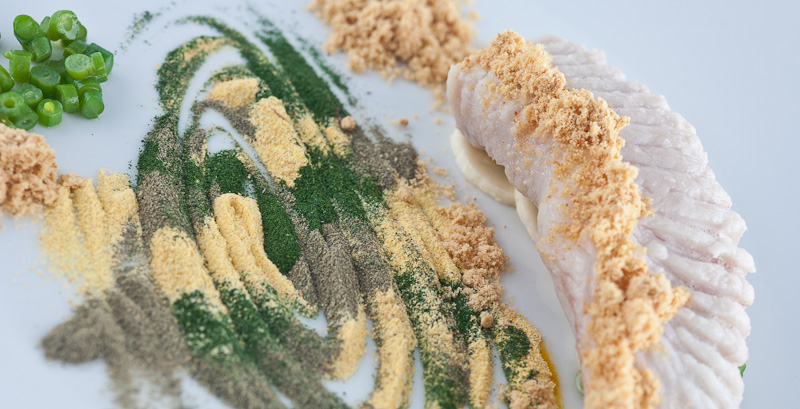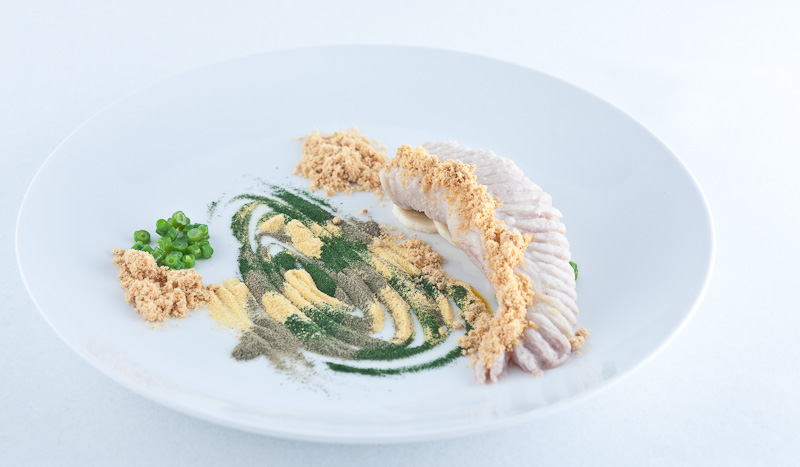
A steak cut from a skate wing is poached gently in butter, and placed top a fan of banana slices and haricot vert rounds. It’s topped with brown butter powder. Nearby lies a hurricane swirl of lemon, caper, and parsley powders.
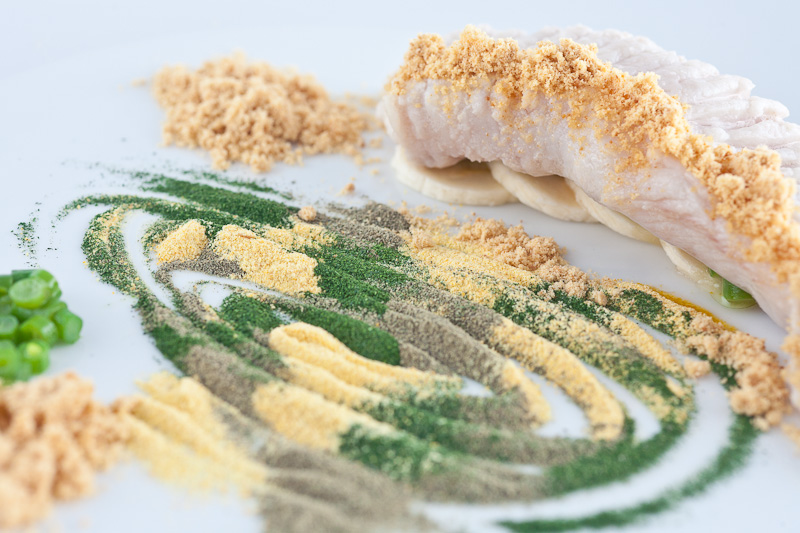
This one is awesome!
It’s also not particularly difficult, given some patience and timing. Making the powders takes maybe a half-hour’s worth of work followed by a day of waiting. I start by blanching some parsley leaves in salt water, then dehydrating them. When they come out of the dehydrator, they look like this:
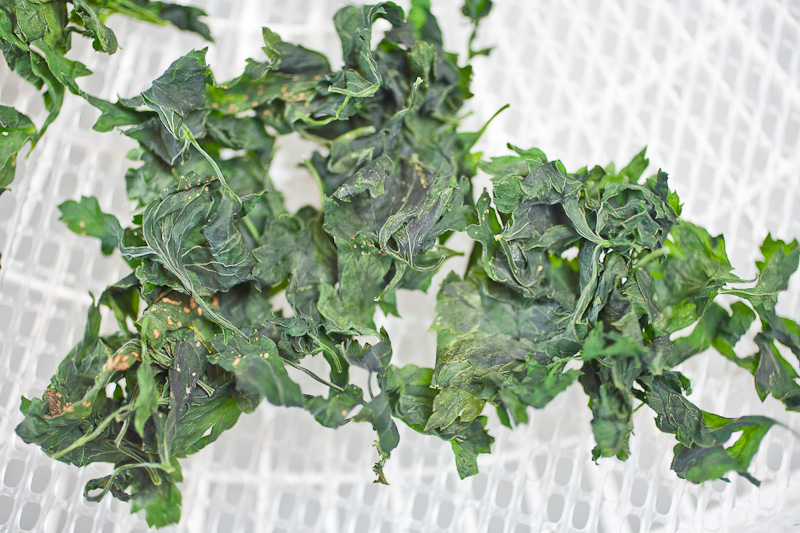
I put the leaves in my mortar and pestle and grind them in small batches, after which they look like this:
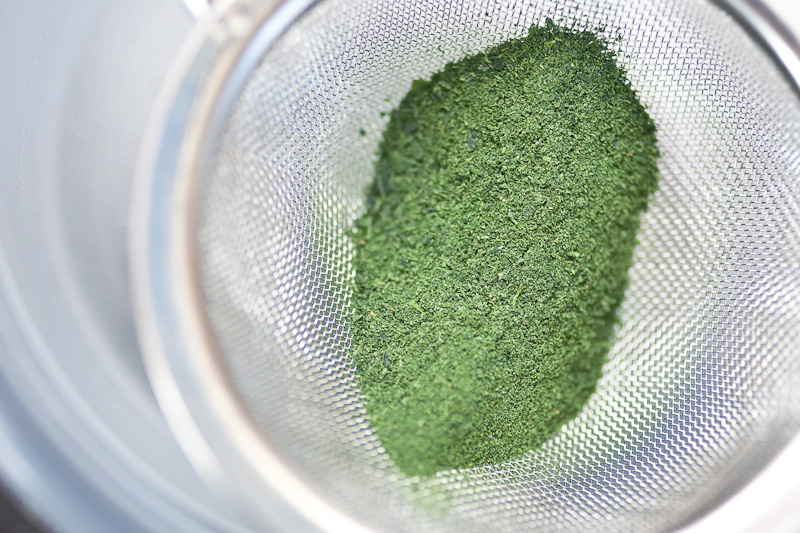
That’s it. The powder tastes and smells vibrantly of parsley, and the color is beautiful. I give similar treatment to some capers (they’re so TINY after being dehydrated!)…
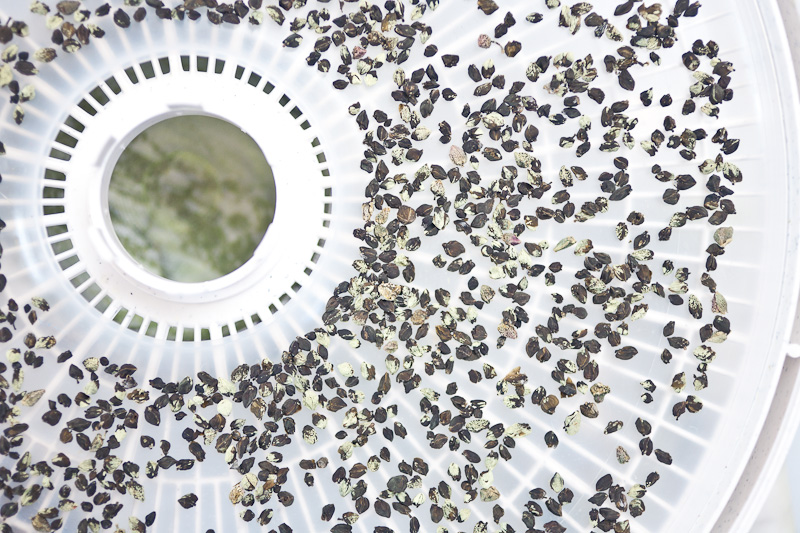
…as well as some candied lemon skins.
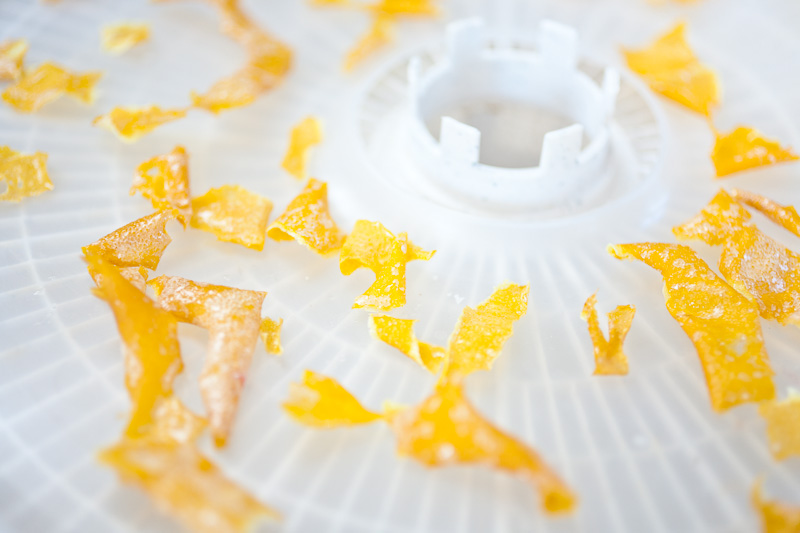
Everything is ground up into powder and stored in airtight containers. While those ingredients are dehydrating, I also work on brown butter powder, the nomenclature of which is a little tricky. Brown butter is made by cooking butter obviously; what’s actually happening is the milk solids in the butter are cooking and caramelizing to give the ‘brown-ness’. Rather than browning butter and somehow drying it, we actually start with powdered milk solids. I bought a tub of Heavy Cream Powder from ChefRubber (it’s not entirely dissimilar to the powdered coffee creamers you find in diners). I brown it in the oven for a few minutes, then mix it up with some powdered dehydrated banana chips.
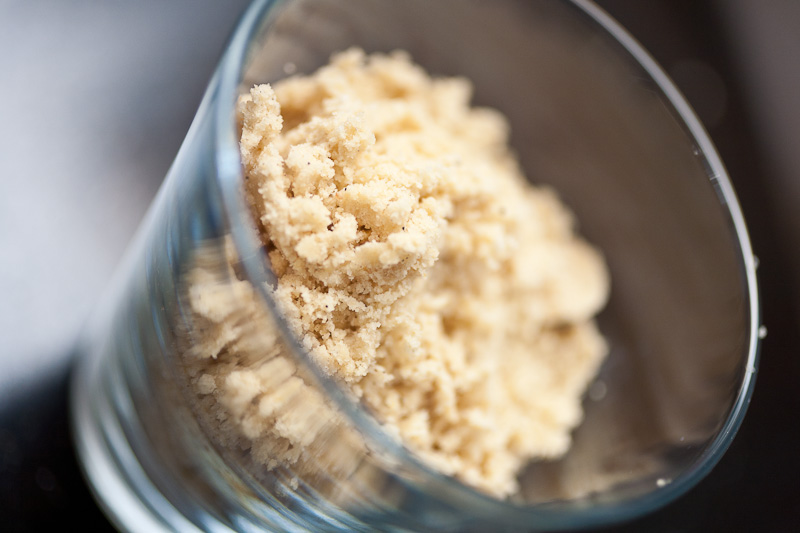
All the powdery stuff done, it’s time to move on to the main attraction: skate wings. I asked cautiously about these at Berkeley Bowl last time I was there, and one of the butchers excitedly and confidently confirmed he had some, that they were super-fresh, and that we’re right smack dab in the middle of the season for them. I asked whether–if I came back in a few days–I’d find they still had some. He said absolutely, so away I went, excited and happy. When I returned a few days later, I asked another butcher if they had any. He said they did, but only a few portions. They were still very fresh, but he said it was hit-or-miss how often they had them, and didn’t think there was a season for them. I wasn’t terribly sure who to trust (something I find very common in butcher counters around here)…the first dude seemed way more confident and like he knew what he was talking about, but if I hadn’t talked with him, the SECOND guy would have seemed confident and like he knew what he was talking about.
But at any rate, I snagged the portions they had. I asked to smell them first; in researching buying skate wings, many people say the wings can take on an ammonia smell if they’re not fresh, and if a butcher shop won’t let you smell their skate wings beware. These smelled perfectly fresh, faintly salty, like any whitefish I might buy.
When I got them home, I turned them over a few times to figure out how to take them apart. There was skin that needed to be removed, and a thick bony cartilage running the length of the wings. Working with a fillet knife, I ran it carefully along the bone to separate the cartilage from the meat. It’s the first time I did this, so my work isn’t the tidiest it should have been (and I only had two portions to practice on), but in the end I came out with something I figure is pretty reasonable:
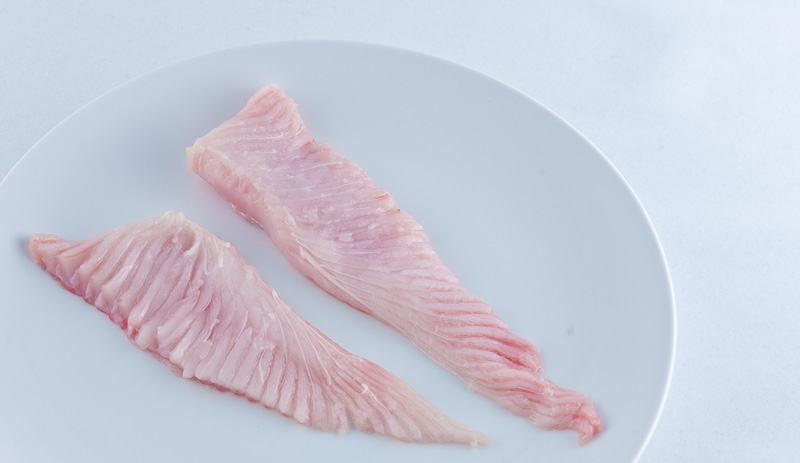
The meat is fascinating and unlike any other I’d seen; it’s the color of a nice whitefish like Bluenose, but the texture is pretty wild. There are these ‘panels’ of muscle that all align with each other, flexing sideways if you push them the right way. It’s a bit tough to describe but it’s pretty cool and unusual.
After filleting the skates, I cut up a bunch of french green beans into 1/16″ rounds. Astute observers will note my appalling lack of consistency with this. My (lack of) knife skills is the thing I’m most self-conscious about.
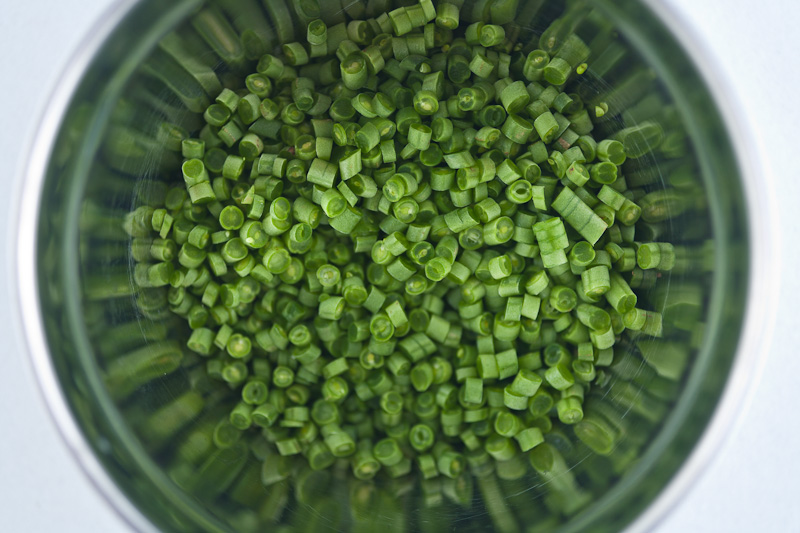
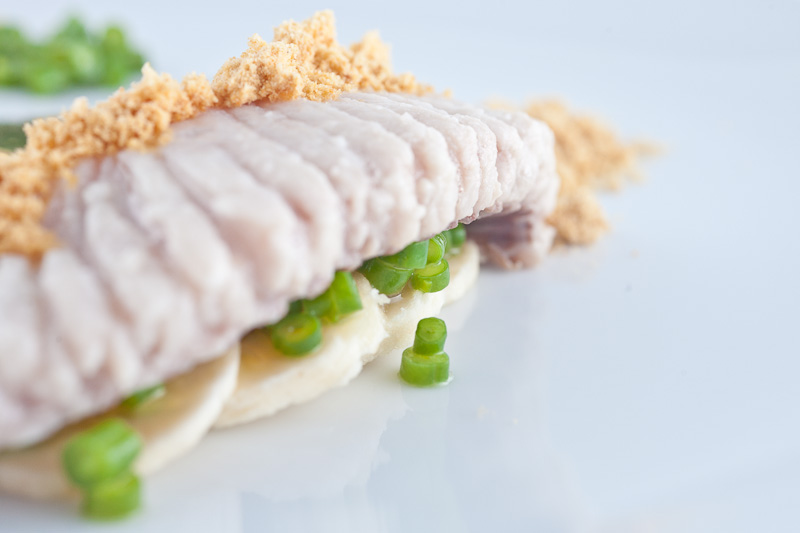
Finally I got to work on a buerre monte. Never in the course of this project have I felt more like a hardcore cook than I did while doing this. A Beurre Monte (French for “mounted butter”) is a sauce made from emulsifying butter a bit at a time in water. What you end up with is a sauce that (if kept at the right temperature) more-closely resembles mayonnaise than melted butter. Butter itself breaks down at 160F, but in the form of beurre monte it can reach temperatures of around 190F without breaking, which is an inviting environment for poaching things.
I brought a small bit of water to a simmer, then added cubes of butter off the heat a bit at a time, whisking in one cube until it had melted before adding another. The process took maybe 25 minutes, and gave me an understanding of the phrase “building up a sauce”, because each new pat of butter brought it closer and closer to a thick emulsified sauce. I worked over (but not on) a burner, moving the pot over and away from the heat as I worked to keep the temperature warm but not hot. If it gets too hot and you start seeing oil, it’s breaking and you’re looking at melted butter. If done properly though, you end up with a smooth sauce that’s opaque and creamy, not dissimilar from mayonnaise.
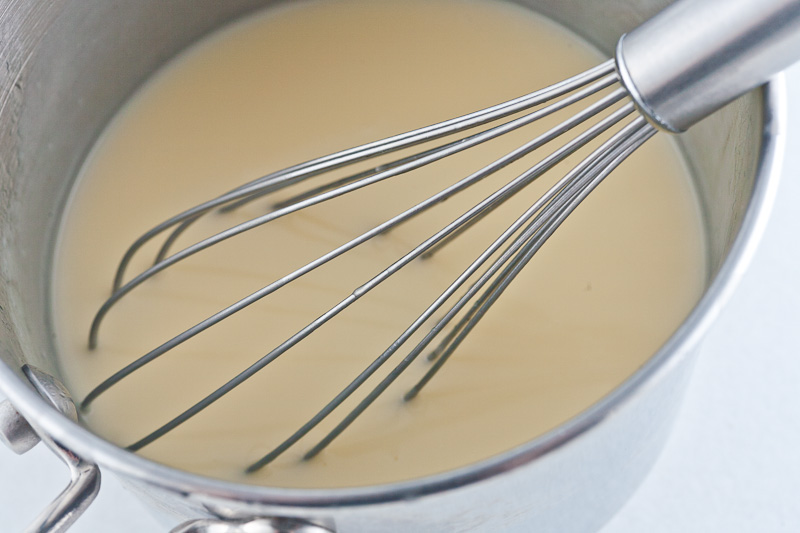
That photo isn’t terribly informative, but this was something I hadn’t ever seen before:
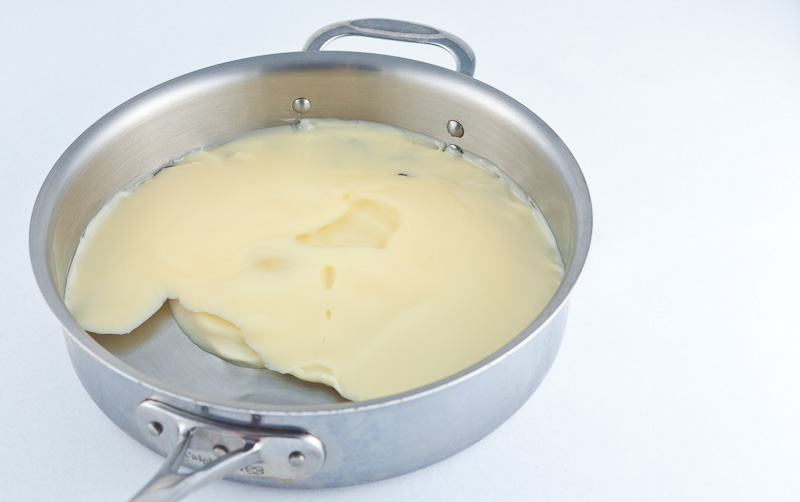
That’s the beurre monte added to water, in preparation for heating and poaching the skate wings.
While the beurre monte/water was heating up, I took a moment to try to practice making the hurricane pattern of the powders. Practicing plating is prudent, I’ve found, and I figured this might be tricky. I used some sugar on a plate and just kept dicking with it until I could fluidly make a swirl that looked nice.
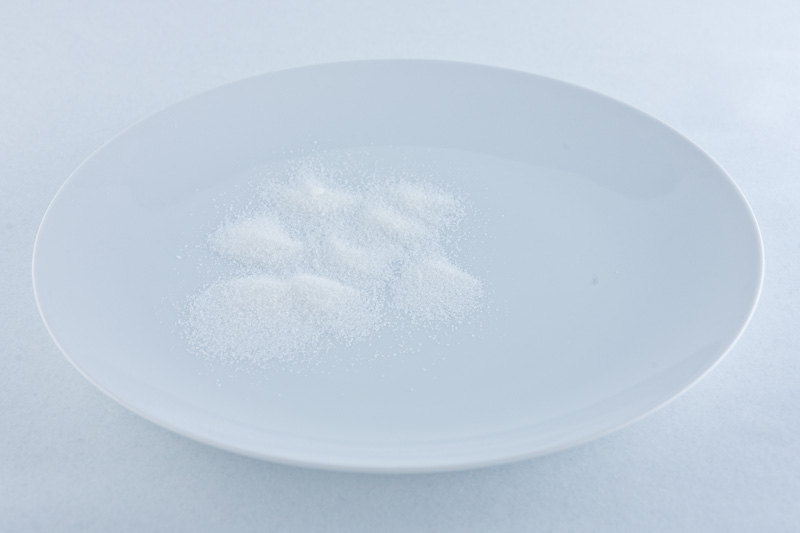
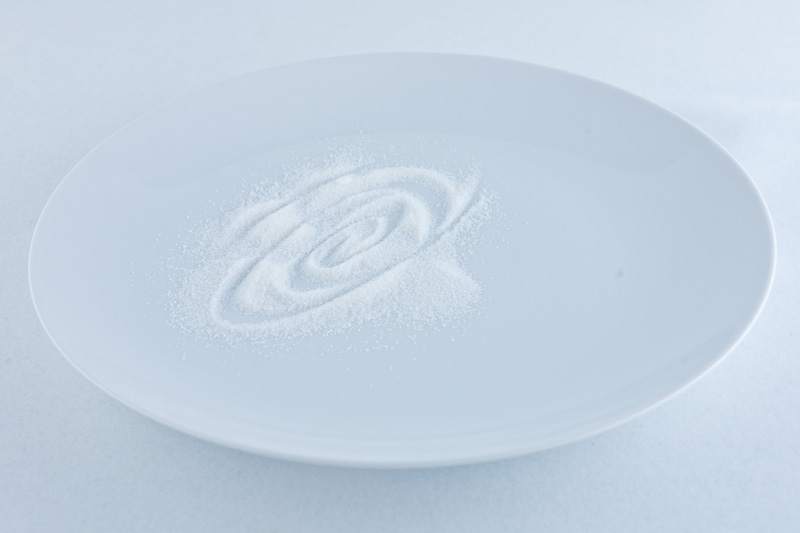
After all that, I poached the skate for about 5 minutes total, then plated a few servings for Sarah and my dinner. I found the whole thing to be quite delicious; the texture of the skate wing was perfect and lovely: incredibly tender and uniquely flaky. The rich poaching in butter meant that it was easy to ‘sop up’ the powders with pieces of the skate; when they got moist from the fish the flavors became creamy and thick. The parsley flavor was a little tough to pick out, but the lemon and capers were independently and collectively delicious. And I was surprised at how nice the banana worked with everything; it was bright and tangy and worked really exceptionally. More than any other dish, I didn’t feel this one was particularly ‘gadgety’, and it tasted very high-end and French. The one regret I had was not pre-heating the plate…everything cooled off by the time I was done, which was a disservice to the buttery fish.
